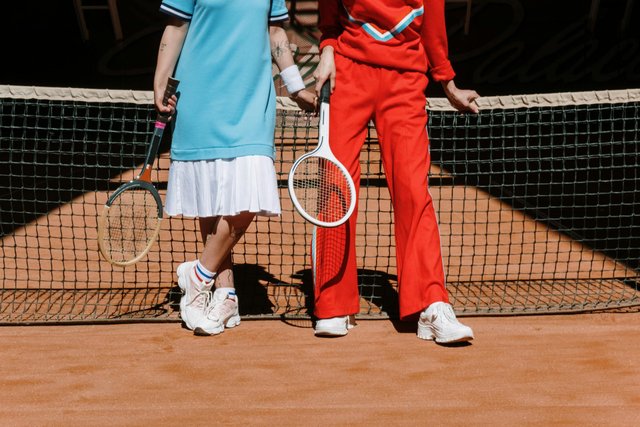
Sports and outdoor gear are often exposed to harsh conditions—dirt, sweat, and extreme weather. Keeping them fresh not only ensures a longer lifespan but also enhances performance. In this guide, we will explore how to care for different types of sports and outdoor gear so they remain in the best possible condition.
Why Maintaining Sports and Outdoor Gear is Essential
Keeping your gear in good condition isn't just about aesthetics or avoiding unpleasant odors; it’s also about functionality. Accumulated dirt, sweat, and grime can impact the performance of your equipment.
For example, moisture-wicking fabrics may lose their ability to keep you dry, or the cushioning in your shoes might break down faster if they aren’t properly cared for. A regular cleaning routine helps preserve the original quality of your gear, ensuring it remains as effective as when you first bought it.

In addition, regular maintenance is an investment in longevity. Gear for sports and outdoor activities is often expensive, and neglecting it can lead to premature replacement. Taking a little extra time to care for your equipment after each use can save you significant costs in the long run.
Cleaning Techniques for Sports Apparel
Sports apparel, often made from technical fabrics, requires special attention. Synthetic fabrics used in sportswear are designed to wick sweat from the body, but they can trap bacteria and odors if not cleaned correctly. Always wash your sports clothes in cold water with a mild detergent to preserve the fabric’s integrity.
Avoid fabric softeners, as they can coat the fibers and reduce their moisture-wicking properties. Dry the clothes in a well-ventilated space rather than in direct sunlight, which can degrade the fabric.
For more rugged outdoor apparel, such as jackets, pay attention to specific care instructions from the manufacturer. Many outdoor garments are designed to be water-resistant, and improper washing can strip away these protective coatings. Use detergents formulated for technical fabrics and consider reapplying a waterproofing treatment after washing.
Footwear Care for Longevity
Shoes are an integral part of both sports and outdoor gear, and improper care can affect their comfort and durability. To clean them, first remove the insoles and laces. Hand wash the exterior with mild soap and a brush, paying special attention to any dirt or mud accumulated on the soles. Once clean, stuff the shoes with newspaper or paper towels to maintain their shape as they dry.
Shoes that have been exposed to sweat or damp conditions need extra care to prevent unpleasant odors. Sprinkle baking soda inside the shoes and leave it overnight to absorb moisture and neutralize odors. In more extreme cases, using a deodorizing spray designed for sports footwear can help eliminate bacteria. Avoid drying shoes in direct sunlight or using a dryer, as extreme heat can weaken the glue and materials used in their construction.
Addressing Odors in Gear
One of the most common challenges with sports and outdoor gear is managing odors. After each use, it’s important to air out your clothing and equipment as soon as possible. Sweat and bacteria thrive in enclosed spaces, so leaving gear in a bag for extended periods can result in persistent smells. Spread everything out in a well-ventilated area immediately after use to let it dry completely.
For especially stubborn odors, try soaking items in a solution of water and white vinegar before washing. This helps break down bacteria that cause unpleasant smells. You can also add a small amount of baking soda to the washing machine to neutralize odors. These techniques work well for both synthetic fabrics and more traditional materials like cotton.
When to Use Dry Cleaning for Specialized Gear
Some sports and outdoor gear should not be washed in a traditional washing machine. For items like down jackets or certain waterproof garments, dry cleaning may be the best option to maintain their structure and performance.
Down jackets, for example, require careful handling. Regular washing can cause the down feathers to clump together, which reduces their insulation properties. Dry cleaning ensures that these garments are cleaned without exposing them to water, which can ruin their fluffiness and warmth.
Similarly, high-end waterproof gear, like rain jackets or pants with advanced coatings, might lose their water-repellent properties if not treated properly. Dry cleaning preserves these materials, extending their lifespan without stripping away essential treatments.
Storing Gear to Prevent Damage
Proper storage is just as important as cleaning when it comes to keeping your gear fresh. Before storing any item, make sure it is completely dry. Damp gear, whether it’s clothing, shoes, or outdoor equipment, can quickly develop mold and mildew, which are difficult to remove and can damage the material. Ensure that your storage area is cool, dry, and well-ventilated.

For clothing and soft gear, store them loosely to avoid unnecessary creases or stretching. When it comes to footwear, particularly hiking boots or running shoes, keep them in a ventilated area rather than stuffing them into closets or gym bags. This allows air to circulate, keeping odors at bay.
Outdoor equipment like tents and sleeping bags should be cleaned thoroughly after each use and stored in breathable bags. Avoid storing them in compression sacks for long periods, as this can damage the insulation and reduce the effectiveness of the material.
How Can Proper Care Extend the Life of Your Gear?
Maintaining your sports and outdoor gear is essential for ensuring long-term performance, comfort, and hygiene. From properly cleaning clothing and shoes to understanding when to opt for dry cleaning, every step you take contributes to the longevity of your gear.
By establishing a consistent care routine and paying attention to proper storage, you’ll keep your equipment in excellent condition, ready for your next adventure.